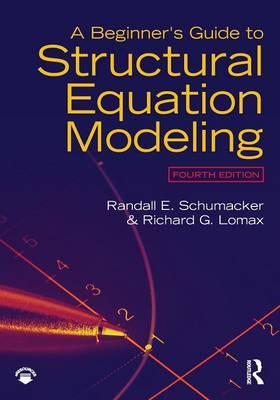Beginner's Guide to Structural Equation Modeling

Beginner's Guide to Structural Equation Modeling
Highlights of the extensively revised 4th edition include:
-Uses different SEM software (not just Lisrel) including Amos, EQS, LISREL, Mplus, and R to demonstrate applications.
-Detailed introduction to the statistical methods related to SEM including correlation, regression, and factor analysis to maximize understanding (Chs. 1 - 6).
-The 5 step approach to modeling data (specification, identification, estimation, testing, and modification) is now covered in more detail and prior to the modeling chapters to provide a more coherent view of how to create models and interpret results (ch. 7).
-More discussion of hypothesis testing, power, sampling, effect sizes, and model fit, critical topics for beginning modelers (ch. 7).
- Each model chapter now focuses on one technique to enhance understanding by providing more description, assumptions, and interpretation of results, and an exercise related to analysis and output (Chs. 8 -15).
-The use of SPSS AMOS diagrams to describe the theoretical models.
-The key features of each of the software packages (Ch. 1).
Descrierea produsului
Highlights of the extensively revised 4th edition include:
-Uses different SEM software (not just Lisrel) including Amos, EQS, LISREL, Mplus, and R to demonstrate applications.
-Detailed introduction to the statistical methods related to SEM including correlation, regression, and factor analysis to maximize understanding (Chs. 1 - 6).
-The 5 step approach to modeling data (specification, identification, estimation, testing, and modification) is now covered in more detail and prior to the modeling chapters to provide a more coherent view of how to create models and interpret results (ch. 7).
-More discussion of hypothesis testing, power, sampling, effect sizes, and model fit, critical topics for beginning modelers (ch. 7).
- Each model chapter now focuses on one technique to enhance understanding by providing more description, assumptions, and interpretation of results, and an exercise related to analysis and output (Chs. 8 -15).
-The use of SPSS AMOS diagrams to describe the theoretical models.
-The key features of each of the software packages (Ch. 1).
Detaliile produsului












